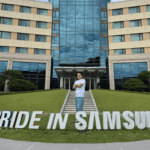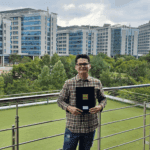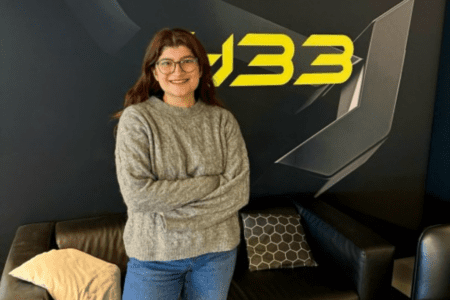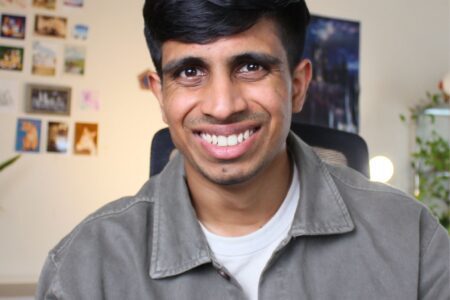
Janani Bhaskar never planned to be working at Tesla. Yet in January 2025, she found herself doing just that.
“As a Project Engineer in the New Product Introduction (NPI) team, I’ll be working at Tesla to launch new products and implementing product changes, while developing and optimising manufacturing processes for Tesla’s innovative products,” she says.
How did a girl from Chennai, India end up working thousands of kilometres away with one of the most sought-after companies today?

Janani Bhaskar believes her time at Duke University was an incredible experience that contributed to both her personal and professional growth. Source: Janani Bhaskar
How Janani found her fit in engineering
Since young, Janani was always experimenting, inside and outside the classroom. Dancing, singing, drawing, school competitions — she was drawn to it all.
In high school, she became interested in biology, physics, chemistry, and mathematics. But nothing truly stuck.
That is, until she started talking to more people — students, professors, friends from coaching classes, and peers who had chosen unconventional paths.
Soon, she discovered Production Engineering, a sub-field that transforms raw material into an updated or new products in the most effective and economic way possible.
“Everything we use needs to be made,” Janani says. “If you want to optimise anything, you need to understand mechanical concepts, like how to run a factory. That was my thought process.”
With a subject chosen, it was time to prepare for the Joint Entrance Examination (JEE) — a highly competitive exam in India for entry into top engineering institutes like the Indian Institutes of Technology (IITs), National Institute of Technology (NITs), and Indian Institutes of Information Technology (IIITs).
It was hard, but she secured a spot at NIT Trichy.

Janani chose Production Engineering because she believed that understanding how things are made and optimised was essential to how the world operates. Source: Janani Bhaskar
From India to pursuing her goal at Duke
Janani grew up in an environment where competition was the norm. Her time at NIT Trichy was no different. It was fast-paced, high-pressure, and heavily focused on a rigid curriculum.
As a Production Engineering student, she covered essential subjects in Mechanical and Industrial Engineering, but the structure left little room for exploration. There wasn’t much flexibility built into the system. If she wanted to dive into other areas, she had to find her own way.
“I personally explored other areas through internships, projects, and involvement in student clubs,” she says.
Over time, these explorations helped her figure out where her real interests lay and gave her a sense of what she might want from her future career.
After graduation, she quickly noticed a similar pattern when she joined Caterpillar, the world’s leading manufacturer of construction and mining equipment, diesel and natural gas engines, and industrial gas turbines.
Her role felt too defined, and her path too predictable.
That limitation pushed her to think seriously about pursuing a master’s degree. The idea had always been there, but now it felt more urgent.
Initially, she considered Germany, the UK, Australia, and the US.
But as she weighed the cost of education against long-term opportunities, the US began to stand out. Specifically, Duke University’s Pratt School of Engineering.

Janani believes Duke University gave her a platform where she learned, grew, built connections, and prepared herself for what came next, including her journey to Tesla. Source: Janani Bhaskar
By completing the Master of Engineering Management, Janani gained technical skills and grew as a person. But the biggest lesson to her was emotional intelligence. She learned to read situations, be more professional, and communicate better.
As she moved through each semester, her career goals became clearer. Initially, Janani wasn’t sure what kind of role or company she aimed for. But through the mix of coursework, advice from professors, and conversations with alumni, she realised she was drawn to roles in project and product management. Duke made it easy to explore those interests, especially with networking events and tech talks that brought in professionals from top companies like Lenovo, Apple, and Tesla. That exposure helped her imagine what was possible.
“Overall, Duke was much more than a university for me,” she says. “It was a platform where I could learn, grow, connect, and prepare myself for what came next, including my journey to Tesla.”

Janani felt Tesla would be the ideal next step since she already had many of the required tools and skills, including design experience that aligned well with Tesla’s roles. Source: Janani Bhaskar
Applying to her dream company
Working at Tesla had always lingered in the back of Janani’s mind as a dream.
Then, around 2021, Tesla’s rapid rise in the EV space caught her attention. In her third semester then, she knew it was crunch time to decide which companies to apply to.
“At that time, I revamped my resume and revisited my experience with Caterpillar,” she says. “That’s when I realised I needed to focus on automotive companies, specifically in hardware product management. Tesla, Apple, and Amazon were the companies that came to mind, and automotive hardware product management became the field I was aiming for.”
Given her background, working at Tesla as a production engineer felt like an ideal next step.
She applied and got into the first round of interview with HR, a 30-minute screening focused on her experience at Caterpillar.
The second round was with the hiring manager.
“They asked what I was looking for at Tesla, why I was interested in working here, and whether I would be open to working in a manufacturing setting,” she says. “There were also several behavioural questions.”
Then came the panel interview, a session with five to six team members, including Technical Programme Managers (TPMs) and engineers.
“They asked a range of questions about Tesla, my experiences, and some technical and mechanical concepts, especially those related to the role,” she says. “The interview lasted about 1 to 1.5 hours, and the questions were role-specific, covering things like designing software and manufacturing concepts. It was intense, but in the end, it was worth it.”
Although she had already interviewed with several big-name companies — Amazon, CVS, Autodesk — the pressure was greater this time around.
To stay in the US, international students like herself need job offers before graduation.
Without it, she would have only three months to find a job — a narrow window that could force her to leave the country if nothing materialised. That reality made every interview count.
“It’s very stressful. I didn’t want to put myself in that zone,” she says.

Janani received her offer from Tesla before graduating in December 2024 and joined the company shortly after. Source: Janani Bhaskar
Landing the dream job at Tesla
That tension melted away when Tesla called a month later. The job offer felt like the moment everything had been building toward.
Coincidentally, it happened on the same day the US election results were being announced, but for her, the only outcome that mattered was in her inbox.
She let herself breathe, called her parents, and finally felt like she could take a break.
It wasn’t until the next day that its magnitude hit her: she was officially going to be working at Tesla.
Four months later, Janani says it’s too soon for her to comment on her work culture here but can say: “The systems they use, the work environment — everything is amazing. My team is amazing, and I am learning a lot.”
Her role as a Project Engineer is focused on change management. She works across teams to introduce product changes, test them, and ensure everything is aligned before rollout. It’s project management with a technical lens — lots of moving parts, and she’s right in the middle of the coordination.
To international students eyeing roles at tech companies like Tesla and others, Janani has one core message: be authentic.
“Don’t try to exaggerate your life experiences or rely too heavily on AI,” she says. “Add your personal touch because that’s why they’re hiring you. Any answer you give, anything you do, whether it’s your resume, cover letter, or application, needs that personal touch, and people will see it. If you don’t have that, take time for self-reflection and bring that personal touch in.
“Understand what you’re good at so you can navigate the job search better. Don’t compare yourself with someone else; they might have a different experience, a different story.”










